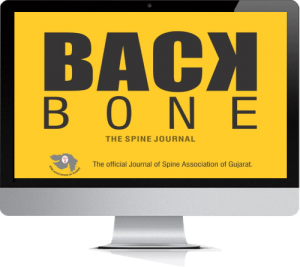A Comparative Study About Diagnostic Yield of Fluoroscopy Guided Transpedicular Biopsy Done by Orthopaedicians V/S CT Guided Biopsy Done by Radiologists in Cases of Koch’s Spine
Volume 4 | Issue 1 | April 2023 – September 2023 | page: 28-31 | Meet Shah, Ashok Rathod, Punith K, Rohan Killekar, Kunal Bharadwaj
DOI: https://doi.org/10.13107/bbj.20232.v04i01.057
Authors: Meet Shah, Ashok Rathod, Punith K, Rohan Killekar, Kunal Bharadwaj
[1] Department of Orthopaedics, Lokmanya Tilak Municipal General Hospital, Sion, Mumbai, Maharashtra, India.
Address of Correspondence
Dr. Meet Shah,
Department of Orthopaedics, Lokmanya Tilak Municipal General Hospital, Sion, Mumbai, Maharashtra, India.
E-mail: meetkshah29@gmail.com
Abstract
Introduction: Tuberculosis is one of the leading causes of mortality worldwide due to a single infectious agent. Koch’s spine or spinal tuberculosis is one of the most crippling manifestations of extra-pulmonary tuberculosis. Owing to the lack of image-guided biopsy centers and the high prevalence of the disease, most of the patients are diagnosed and treated on clinical grounds. This practice was thought to lead to a delay in the diagnosis of other pathologies and multi-drug-resistant tuberculosis. This study aims to compare the diagnostic yield of fluoroscopy (C-arm) guided transpedicular biopsy done by orthopaedicians v/s CT guided biopsy done by radiologists in cases of Koch’s spine.
Materials and Methods: The study involved 60 consented patients with a clinico-radiological diagnosis of Koch’s spine randomly divided into 2 groups for biopsy 1) CT-guided biopsy to be done by radiologists 2) C-arm guided biopsy to be done by orthopedicians and results were compared.
Results: The use of CT-guided biopsy and C-arm guided biopsy in the diagnosis of Koch’s spine is increasing taking into consideration of increasing MDR TB. We got a positive answer in 70% of cases via CT-guided biopsy and 53.33% via C-arm guided biopsy. Detection of MDR TB on GeneXpert was the commonest diagnostic feature with a comparatively low rate of positive AFB smear and histopathology.
Conclusion: Results of C-arm guided biopsy are similar to CT guided biopsy with the latter being better.
Keywords: Koch’s spine, biopsy, multi-drug resistant tuberculosis
References
1) https://www.who.int/news-room/fact sheets/detail/tuberculosis#:~:text=Worldwide%2C%20TB%20is%20the%2013th,all%20countries%20and%20age%20groups.
2) Moon MS. Tuberculosis of the spine: controversies and a new challenge. Spine (Phila Pa 1976) 1997;22: 1791-7.
3) Wang H, Li C, Wang J, Zhang Z, Zhou Y. Characteristics of patients with spinal tuberculosis: seven-year experience of a teaching hospital in Southwest China. Int Orthop 2012;36:1429-34.
4) McLain RF, Isada C. Spinal tuberculosis deserves a place on the radar screen. Cleve Clin J Med 2004;71: 537-9.
5) World Health Organization (WHO). Pakistan: stop tuberculosis [Internet]. Islamabad: WHO; 2014 [cited 2015 Apr 22]. Available from: http://www.emro.who. int/pak/programmes/stop-tuberculosis.html.
6) Francis IM, Das DK, Luthra UK, Sheikh Z, Sheikh M, Bashir M. Value of radiologically guided fine needle aspiration cytology (FNAC) in the diagnosis of spinal tuberculosis: a study of 29 cases. Cytopathology 1999; 10:390-401.
7) Colmenero JD, Ruiz-Mesa JD, Sanjuan-Jimenez R, Sobrino B, Morata P. Establishing the diagnosis of tuberculous vertebral osteomyelitis. Eur Spine J 2013;22 Suppl 4:579-86.
8) Laurent Pierot and Anne Boulin, Percutaneous Biopsy of the thoracic and lumbar spine; Transpedicular approach under fluoroscopic guidance, Jan 1998.
| How to Cite this Article: Shah M, Rathod A, Punith K, Killekar R, Bharadwaj K | A Comparative Study About Diagnostic Yield of Fluoroscopy Guided Transpedicular Biopsy Done by Orthopaedicians v/s CT Guided Biopsy Done by Radiologists in Cases of Koch’s Spine| Back Bone: The Spine Journal | April 2023-September 2023; 4(1): 28-31 | https://doi.org/10.13107/bbj.2023.v04i01.057 |
(Abstract Text HTML) (Download PDF)
.


